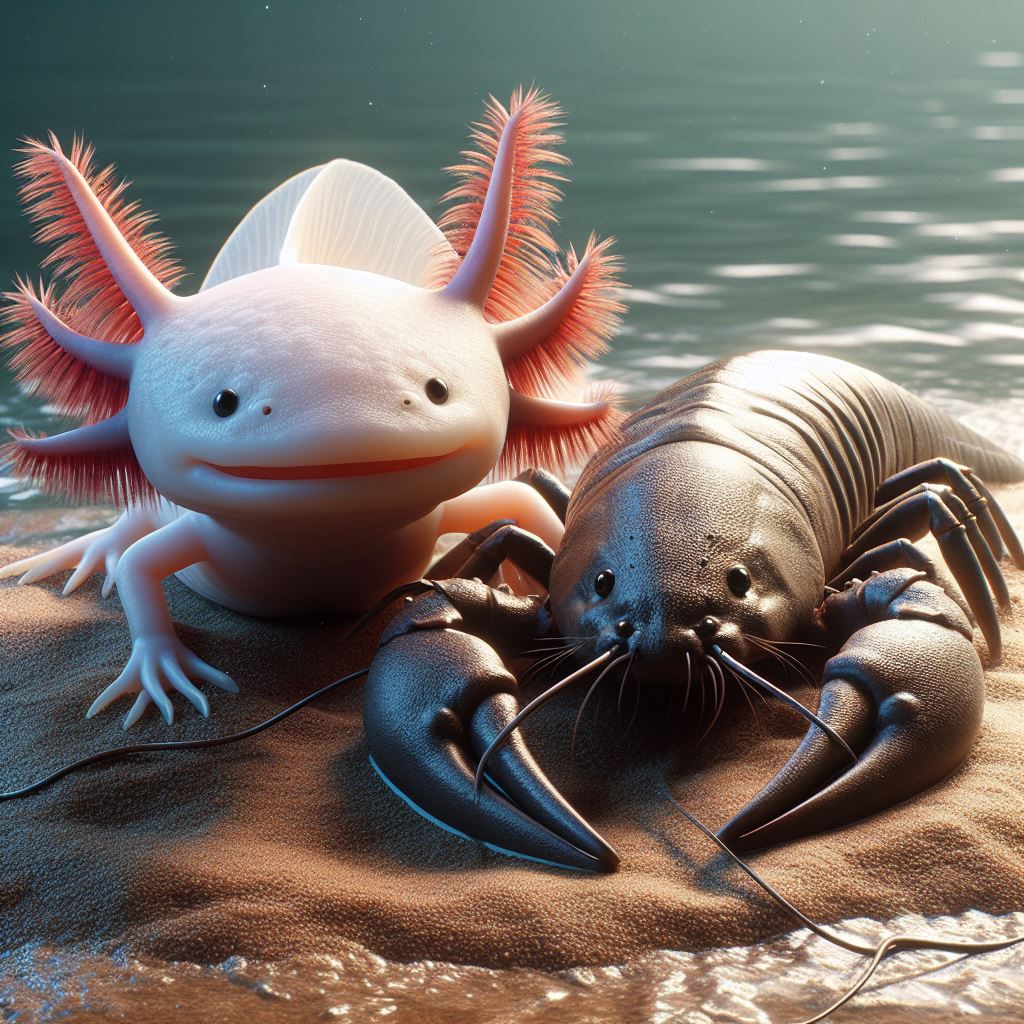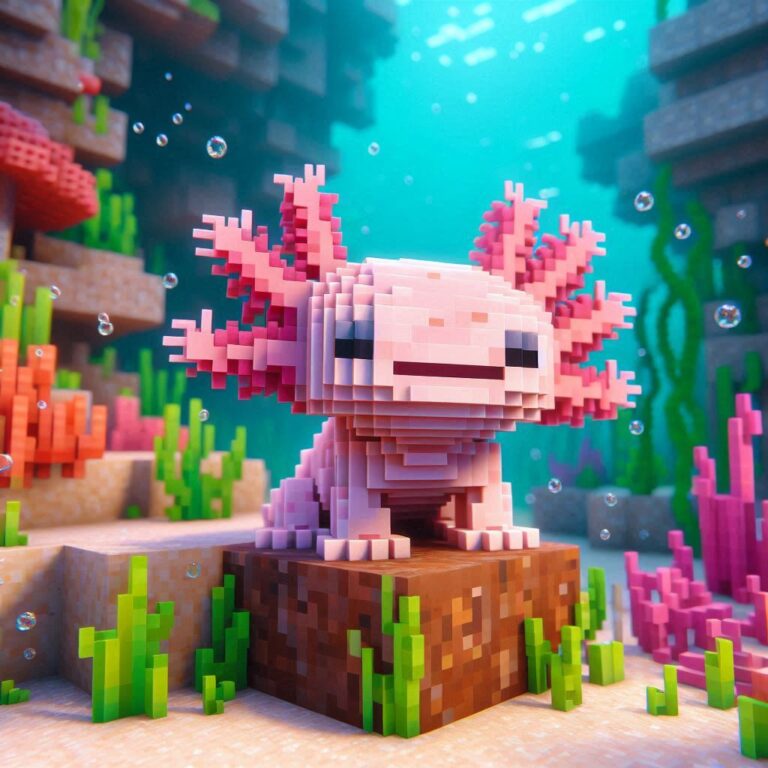
Whether axolotls can coexist with yabbies in the same tank is a common question among aquarium enthusiasts. While it’s technically possible to house these two species together, it’s important to consider their differing habitat requirements, behaviors, and potential risks. Axolotls are amphibians native to Mexico and prefer cooler water temperatures, typically ranging from 60-68°F (15-20°C), while yabbies, also known as freshwater crayfish, originate from Australia and thrive in slightly warmer waters around 72-82°F (22-28°C). Additionally, yabbies can be territorial and may exhibit aggressive behavior, especially if they feel threatened or if resources are limited. Furthermore, there’s a risk of disease transmission between axolotls and yabbies if proper quarantine procedures are not followed. Therefore, while it’s possible to house axolotls and yabbies together, it’s essential to provide a large tank with ample space, hiding spots, and careful monitoring to ensure the well-being of both species.
Habitat Requirements: Axolotls vs. Yabbies
Axolotls and yabbies hail from different corners of the world, each with its unique habitat preferences. The axolotl, an intriguing amphibian native to the freshwater lakes of Mexico, thrives in cool, oxygen-rich waters. Its natural habitat comprises murky, shallow waters with plenty of aquatic plants and soft substrate for burrowing. In contrast, the yabby, a freshwater crustacean native to Australia, prefers warmer temperatures and freshwater streams with sandy or gravelly substrates. These differences in habitat preferences are essential to consider when contemplating housing these species together. Finding a balance in tank conditions that meets the needs of both axolotls and yabbies is crucial for their overall health and well-being.
Tank Size and Setup
When it comes to housing axolotls and yabbies together, size matters—a lot. Both species require ample space to move around and establish their territories. For axolotls, a general rule of thumb is to provide a tank size of at least 20 gallons for one adult axolotl, with an additional 10 gallons per extra axolotl. Yabbies, on the other hand, also appreciate spacious environments, especially if they are housed with other tank mates. A larger tank not only accommodates their territorial behaviors but also helps maintain stable water parameters. Additionally, the tank setup should include plenty of hiding spots, caves, and plants to offer refuge and stimulation for both axolotls and yabbies.
Water Parameters
Maintaining optimal water parameters is paramount for the health and well-being of axolotls and yabbies alike. Axolotls thrive in cooler water temperatures ranging from 60-68°F (15-20°C) and require pristine water quality to prevent stress and illness. Yabbies, on the other hand, prefer slightly warmer waters between 72-82°F (22-28°C) and are sensitive to fluctuations in pH and ammonia levels. Regular water testing and monitoring are essential to ensure that the tank environment remains suitable for both species. Additionally, proper filtration and regular water changes are necessary to keep ammonia and nitrite levels in check, providing a clean and healthy habitat for axolotls and yabbies to thrive.
Substrate and Decorations
Choosing the right substrate and decorations for a tank housing axolotls and yabbies involves striking a balance between functionality and aesthetics. For axolotls, a soft substrate such as sand or fine gravel is ideal, as it mimics their natural habitat and prevents injury to their delicate skin. Adding live or artificial plants provides enrichment and hiding spots for axolotls to explore and rest. Yabbies, on the other hand, prefer sandy or gravelly substrates that allow them to burrow and create their territories. Incorporating natural rocks, driftwood, and PVC pipes provides yabbies with hiding spots and structures to explore. When selecting decorations, it’s essential to choose non-toxic materials and avoid sharp edges or small openings that could pose a risk to either species. By carefully selecting substrate and decorations, aquarists can create a visually appealing and functional habitat that meets the needs of both axolotls and yabbies.
Yabbies Behavior: How It Affects Axolotls
Understanding the behavior of yabbies is crucial when considering housing them with axolotls. Yabbies are known for their territorial nature, often establishing and defending territories within the tank. This territorial behavior can have implications for axolotls, as they may become stressed or agitated by the presence of aggressive yabbies. Additionally, yabbies are opportunistic feeders and may compete with axolotls for food resources, leading to potential conflicts. Therefore, careful observation and monitoring of yabbies’ behavior are necessary to ensure a harmonious coexistence with axolotls in the same tank.
Territorial Behavior
Yabbies are notorious for their territorial behavior, particularly towards members of their own species and other tank mates. Within the confines of an aquarium, yabbies will often establish territories, which they defend vigorously against intruders. This territorial aggression can pose challenges when housing yabbies with other species, such as axolotls. Axolotls, with their more passive demeanor, may become stressed or injured if confronted by aggressive yabbies. Providing ample hiding spots and visual barriers can help mitigate territorial disputes and promote a more peaceful coexistence between yabbies and axolotls in the same tank.
Feeding Habits
Yabbies are omnivorous creatures with voracious appetites, feeding on a variety of plant matter, small invertebrates, and even carrion. Their feeding habits can have implications for axolotls sharing the same tank. While axolotls primarily feed on live or frozen foods such as bloodworms, brine shrimp, and earthworms, they may compete with yabbies for food resources if not adequately fed. Therefore, ensuring that both species receive a balanced and nutritious diet is essential for their overall health and well-being. Additionally, feeding axolotls and yabbies at separate times or using feeding dishes can help minimize competition and reduce the risk of aggression during feeding.
Compatibility with Other Tank Mates
When considering housing yabbies and axolotls together, compatibility with other tank mates is an important factor to consider. Yabbies, with their territorial behavior and aggressive tendencies, may not be suitable companions for more passive or delicate species. Additionally, yabbies are known to be opportunistic feeders and may prey on smaller tank mates if given the opportunity. Therefore, choosing compatible tank mates that can coexist peacefully with both yabbies and axolotls is essential for maintaining a harmonious aquarium environment. Generally, selecting species with similar habitat preferences and temperaments can help minimize conflicts and promote a more stable community within the tank.
Dietary Differences Between Axolotls and Yabbies
Axolotls and yabbies may share a tank, but their dietary preferences couldn’t be more different. Axolotls are carnivorous amphibians, primarily feeding on live or frozen foods such as bloodworms, brine shrimp, and small fish. They are opportunistic feeders, relying on their keen sense of smell and lateral line system to detect prey. Yabbies, on the other hand, are omnivorous crustaceans with a more varied diet. They consume plant matter, small invertebrates, and even carrion, scavenging for food in their environment. These dietary differences are essential to consider when planning meals for both species in the same tank.
Axolotl Diet
Axolotls have specific dietary requirements to support their growth and overall health. A diet rich in protein is essential for axolotls, with live or frozen foods being preferred over pellets or flakes. Bloodworms, brine shrimp, earthworms, and small fish such as guppies or minnows are all suitable options for feeding axolotls. It’s crucial to provide a varied diet to ensure that axolotls receive all the essential nutrients they need to thrive.
Yabby Diet
Yabbies are opportunistic feeders with a broad diet encompassing both plant and animal matter. In their natural habitat, they consume algae, aquatic plants, small invertebrates, and even carrion. In captivity, yabbies can be fed a variety of foods, including sinking pellets, blanched vegetables, and protein-rich foods such as shrimp or fish. It’s important to offer a balanced diet to yabbies to ensure they receive all the necessary nutrients for growth and vitality.
Feeding Considerations When Housing Together
Feeding axolotls and yabbies together requires careful consideration to meet the dietary needs of both species. While axolotls primarily consume live or frozen foods, yabbies have a more varied diet that includes plant matter and protein-rich foods. Providing a varied diet that meets the nutritional requirements of both axolotls and yabbies is essential for their overall health and well-being. Additionally, feeding both species at separate times or using feeding dishes can help minimize competition and reduce the risk of aggression during feeding. Monitoring their feeding behaviors and adjusting their diet as needed ensures that both axolotls and yabbies thrive in their shared environment.
Potential Risks of Housing Axolotls and Yabbies Together
While housing axolotls and yabbies together can create a fascinating aquatic ecosystem, it also poses certain risks that aquarists should be aware of. Understanding these risks is essential for maintaining the health and well-being of both species in the shared tank environment. From aggression and predation to disease transmission and stress-related issues, careful consideration must be given to mitigate these potential risks effectively.
Aggression and Predation
One of the primary risks associated with housing axolotls and yabbies together is aggression and predation. Yabbies, with their territorial behavior and opportunistic feeding habits, may exhibit aggression towards axolotls, especially if they feel threatened or if resources are limited. Additionally, larger yabbies may view smaller axolotls as potential prey, leading to predation attempts within the tank. Providing ample hiding spots and visual barriers can help reduce aggression and predation, allowing both species to coexist more peacefully.
Disease Transmission
Another significant risk of housing axolotls and yabbies together is the potential for disease transmission between the two species. Both axolotls and yabbies are susceptible to a variety of aquatic diseases and pathogens, which can easily spread in a shared tank environment. Factors such as poor water quality, overcrowding, and stress can increase the likelihood of disease transmission. Therefore, maintaining optimal water parameters, practicing good tank hygiene, and quarantining new additions are essential strategies for minimizing the risk of disease transmission between axolotls and yabbies.
Stress-Related Issues
Stress can have detrimental effects on the health and well-being of both axolotls and yabbies when housed together. Factors such as aggression, predation, inadequate tank conditions, and incompatible tank mates can all contribute to stress-related issues. Signs of stress in axolotls and yabbies may include reduced appetite, lethargy, abnormal behavior, and increased susceptibility to disease. To mitigate stress-related issues, it’s crucial to provide a suitable tank environment with ample space, hiding spots, and compatible tank mates. Additionally, regular monitoring and observation can help identify and address any sources of stress before they escalate into more significant problems.
Temperature and Water Quality Considerations

Maintaining optimal temperature and water quality is crucial for the health and well-being of both axolotls and yabbies when housed together. These two factors play a significant role in their overall physiological functions, immune response, and behavior. Therefore, aquarists must carefully monitor and regulate temperature and water parameters to create a suitable environment for both species to thrive. By understanding their specific temperature requirements and water quality preferences, aquarists can ensure a harmonious and stable aquatic ecosystem for axolotls and yabbies.
Temperature Requirements
Axolotls and yabbies have distinct temperature requirements based on their natural habitats and physiological adaptations. Axolotls are cold-blooded amphibians native to cooler freshwater environments, preferring water temperatures between 60-68°F (15-20°C). In contrast, yabbies, being freshwater crustaceans, thrive in slightly warmer waters ranging from 72-82°F (22-28°C). Finding a compromise temperature within this range is essential for housing axolotls and yabbies together, ensuring that both species remain comfortable and healthy in their shared tank environment.
Water Quality Parameters
Maintaining optimal water quality parameters is essential for the health and well-being of axolotls and yabbies. Key water quality parameters include pH, ammonia, nitrite, nitrate levels, and dissolved oxygen content. Axolotls are particularly sensitive to high levels of ammonia and nitrite, which can lead to stress, illness, and even death if not promptly addressed. Yabbies, on the other hand, are sensitive to fluctuations in pH and oxygen levels, which can impact their respiratory function and overall health. Regular water testing and monitoring are essential to ensure that water quality remains within acceptable ranges for both species.
Compatibility of Habitat Preferences
Despite their differences in habitat preferences, axolotls and yabbies can coexist in the same tank with careful consideration and management. Providing a tank environment that meets the needs of both species, including appropriate temperature, water quality, and habitat features, is essential for ensuring compatibility. Aquarists can achieve this by selecting tank mates with similar habitat preferences, providing ample hiding spots and visual barriers to reduce aggression, and maintaining stable water parameters. By creating a harmonious environment that accommodates the habitat preferences of both axolotls and yabbies, aquarists can foster a thriving and balanced aquatic ecosystem.
FAQs
Q. Can axolotls and yabbies share the same tank?
A. While it’s possible, it’s generally not recommended due to differences in habitat requirements and potential compatibility issues.
Q. What size tank is suitable for housing axolotls and yabbies together?
A. A large tank with ample space and hiding spots is essential to minimize territorial conflicts.
Q. Do axolotls eat yabbies?
A. Axolotls may try to eat yabbies, especially if they are small enough to fit into their mouths.
Q. Are yabbies aggressive towards axolotls?
A. Yabbies can be territorial and may exhibit aggressive behavior towards axolotls, especially if they feel threatened or if resources are limited.
Q. What should I feed axolotls and yabbies when housing them together?
A. Offering a varied diet that meets the nutritional needs of both species is crucial. Consult with a veterinarian or aquatic specialist for specific recommendations.
Q. How do I prevent aggression between axolotls and yabbies?
A. Providing plenty of hiding spots and visual barriers can help reduce aggression by allowing each species to establish their territory.
Q. Can axolotls and yabbies transmit diseases to each other?
A. Yes, there is a risk of disease transmission between axolotls and yabbies if proper quarantine procedures are not followed.
Q. What temperature should the tank be maintained at for axolotls and yabbies?
A. Axolotls prefer cooler water temperatures around 60-68°F (15-20°C), while yabbies thrive in slightly warmer waters around 72-82°F (22-28°C). Finding a compromise temperature within this range is essential.
Q. Do axolotls and yabbies interact with each other?
A. Interaction between axolotls and yabbies may occur, but it’s often limited to territorial disputes or potential predation attempts.
Q. Can I add other tank mates along with axolotls and yabbies?
A. Introducing additional tank mates should be done with caution, considering the compatibility of each species’ needs and behaviors. Consultation with an aquatic specialist is recommended for suitable tank mates.
Conclusion
In conclusion, while housing axolotls and yabbies together can be a rewarding endeavor, it requires careful consideration and management to ensure the well-being of both species. Understanding the differences in their habitat requirements, behaviors, and dietary preferences is essential for creating a harmonious tank environment. From temperature and water quality considerations to compatibility of habitat preferences, every aspect of their care must be meticulously attended to. By providing a spacious tank with appropriate hiding spots, visual barriers, and suitable tank mates, aquarists can foster a peaceful coexistence between axolotls and yabbies.

Hassan Shah carries over four years of hands-on expertise in caring for axolotls, guided by his cherished companion ‘Little Bruno,’ a thriving axolotl under his attentive care for three years.



